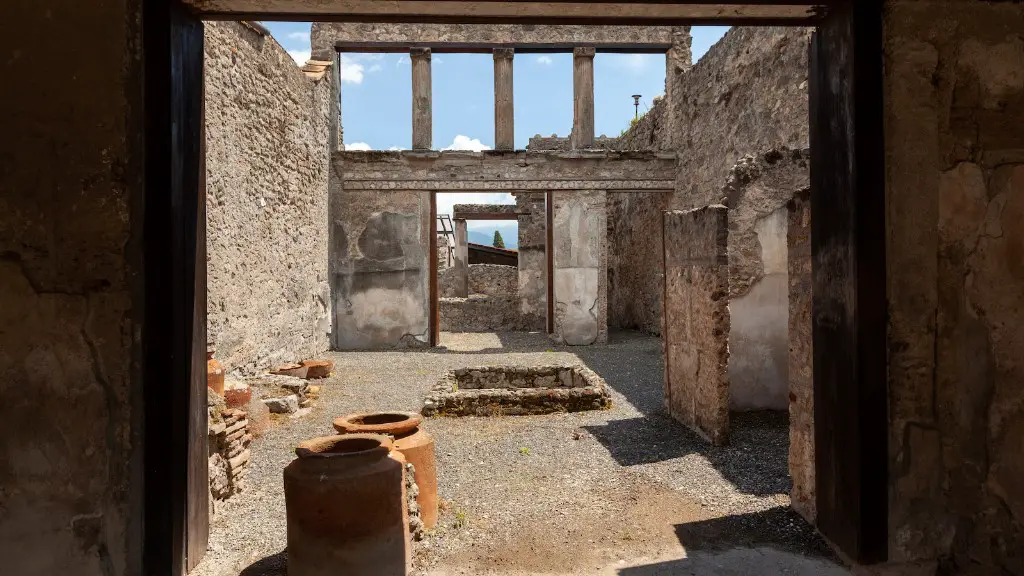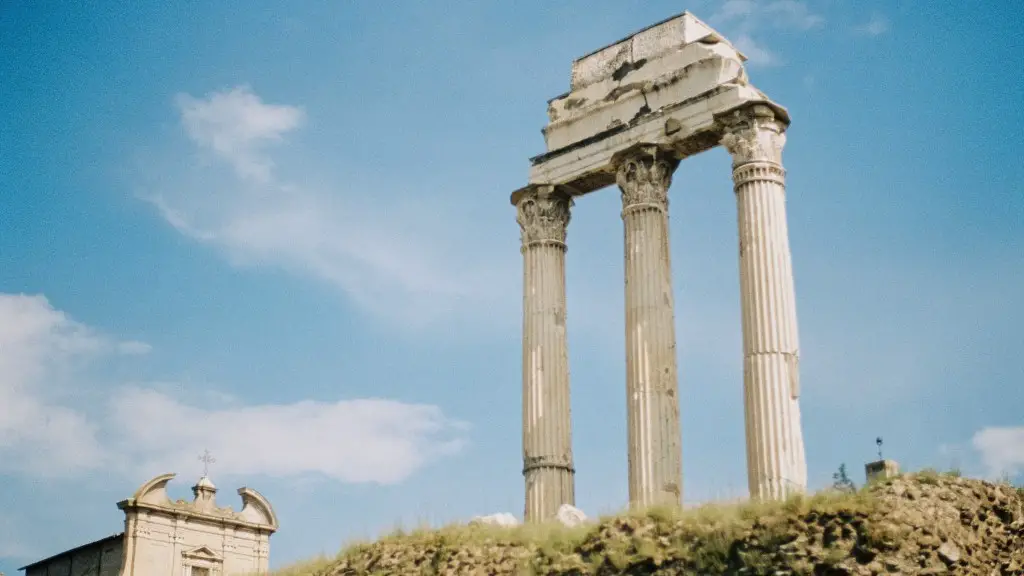The Republic of Ancient Rome
Ancient Rome was a powerful and influential civilization that governed much of Europe, the Middle East, and North Africa for one thousand years. At its peak, the Roman Empire was ruled by two powerful governing bodies – the Senate and the Assemblies. These two institutions were the foundations of the Roman Republic and its democracy.
The Senate was the ruling body of the Republic and consisted mainly of patricians and members appointed for life by the emperor. This body, made up of the most powerful men of Rome, all had the right to speak and veto, meaning that it had the final say in matters of state and the various laws that governed their society.
The Senate had the power to decide matters of foreign and domestic policy, raise and maintain armies, and appoint magistrates who could also vote. This body was responsible for creating and maintaining order, fostering economic growth and stability, and regulating relations with other countries, as well as maintaining order within the country’s borders.
The Assemblies were the legislative body of the Republic and the direct voice of the people. Citizens met in an assembly, known as the comitia, and elected magistrates who represented their interests in the Senate. The assemblies had the power to pass laws, elect officials, and even impeach current officials if they felt their interests were not being served.
The assemblies also had the power to ratify treaties and create allies. The power of the people to influence the decisions of their government was key to the stability of Ancient Rome and ensured a fair distribution of resources and wealth.
Both the Senate and the Assemblies had their limitations. The Senate was restricted to a select few and did not always reflect the interests of the people. The assemblies, while representing the interests of the people, did not always present them with tangible solutions. This created a system of governance in Ancient Rome that was often unable to move forward with any real progress and this ultimately led to its decline.
Social Distinctions
The two governing bodies were divided along social differences in Ancient Rome. The Senate was composed of men of high-birth – mostly patricians of noble families who had been given hereditary rights and privileges. These men had a great amount of influence in the political decisions of the Republic. Assemblies, on the other hand, were open to any citizen of Rome and allowed for the people of the Republic to have their voices heard.
The Senate had the final say in deciding on laws and policies, but the Assemblies could influence their decisions. Citizens had the right to vote for their representatives in the Assembly and thus had an influence on the political decisions of the Republic. This gave the Roman people a certain amount of control over the decisions that were taken by the upper class.
The two governing bodies of Rome were thus fundamentally different in their purpose and mode of operation. The Senate was a closed institution, while the Assemblies were open and allowed for the direct democracy of the people. The two bodies had the same ultimate goal – to ensure the stability of the Republic and secure the well-being of its citizens.
Military Command
The two governing bodies also had different roles in military matters. The Senate had the power to declare war, while the Assemblies had the authority to command troops in the field. This separation of power was important as it enabled the Republic to maintain a powerful and disciplined military that was capable of defending its interests. The divisions between the two bodies also minimised corruption and prevented mistakes from occurring due to a lack of clarity in the chain of command.
The Senate was responsible for approving the selection of military equipment and supplies, as well as determining strategy and tactics. They also had the authority to appoint a commander-in-chief, though this was usually the consul or praetor. The Assemblies, on the other hand, took care of the details such as deciding on the size of the army, approving terms of enlistment and expenditure, and electing tribunes and centurions.
The two governing bodies in Ancient Rome worked together to ensure that their military was organized, disciplined, and effective. This was important if they were to maintain their position as one of the great powers in the ancient world.
Religious Authority
The two governing bodies of Ancient Rome also had distinct roles in religious affairs. The Senate was mainly tasked with establishing and enforcing the laws pertaining to religious activities. They had the authority to impose fines on people who violated the religious and civil laws of Rome and could decree which deities were recognised, as well as what rituals and ceremonies were permitted.
The Assemblies, on the other hand, had the power to choose and appoint people to religious offices and to enact laws relating to religion. This included the rights and privileges of each of the various religious groups and institutions, as well as whether or not they should receive public funds.
The two governing bodies of Ancient Rome worked together to ensure the peaceful co-existence of the various religions in their society. This was important in maintaining a harmonious society, ensuring that public order and civil society were respected.
Nobility
The Senate and Assemblies both had the power to appoint members of the nobility into certain positions and to grant them certain privileges. The Senate had the power to grant more preferred people hereditary rights and titles and grant them a certain amount of favored status in certain areas. The Assemblies could grant the same privileges to any citizen of the Republic, providing them with greater political influence. This had a significant impact on the noble class in Ancient Rome, allowing for a greater concentration of power and wealth among a select few.
The two governing bodies of Rome were thus responsible for preserving the social structure of their society. This ensured that the interests of the aristocracy were represented and protected while at the same time providing stability and upholding the rights of the people.
Conclusion
The two governing bodies of Ancient Rome were essential components of the Republic’s success and stability. The Senate was the ruling body, while the Assemblies were the legislative body with the direct voice of the people. These two institutions worked together to ensure that the interests of the Senate and the people were represented, allowing for a more balanced government. They also had different roles in military and religious matters, allowing for the citizens of Rome to have some control over the decisions of their government. Finally, the two governing bodies were responsible for maintaining the social distinctions of the noble class and preserving their rights and privileges.




